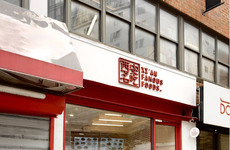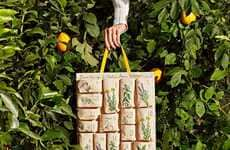
Vignesh Sankar's Trash Feast Solves Night-Time Food Dilemmas
Kalin Ned — August 2, 2022 — Art & Design
Good night-time restaurants are few and far between. Vignesh Sankar, an architecture student at Oxford Brookes University, attempts to solve this with the Trash Feast concept. Combining an eco-conscious attitude and a focus on healthy food, this concept is a solution for "drunk and hungry night-time clients" in Oxford's City Center.
Sankar envisions the night-time restaurant sourcing its ingredients from neighboring supermarkets. The cooks will then turn the unsold perishables into healthy yet indulgent culinary creations—like burritos, for example.
Additionally, the architecture student emphasized the aesthetics of the building that will house the night-time restaurant. The design is said to "continue the provocation of Gaetano Pesce's use of pink polyurethane foam as a whole-solution cladding." By opting in for this material, Vignesh Sankar challenges the notion of what "finished aesthetics" really is.
Image Credit: Vignesh Sankar
Sankar envisions the night-time restaurant sourcing its ingredients from neighboring supermarkets. The cooks will then turn the unsold perishables into healthy yet indulgent culinary creations—like burritos, for example.
Additionally, the architecture student emphasized the aesthetics of the building that will house the night-time restaurant. The design is said to "continue the provocation of Gaetano Pesce's use of pink polyurethane foam as a whole-solution cladding." By opting in for this material, Vignesh Sankar challenges the notion of what "finished aesthetics" really is.
Image Credit: Vignesh Sankar
Trend Themes
1. Eco-conscious Night-time Restaurants - Restaurants that source ingredients from neighboring supermarkets to create healthy yet indulgent culinary creations for drunk and hungry night-time clients.
2. Trash-to-treasure Dining Experience - Turning unsold perishable ingredients into healthy yet indulgent culinary creations, offering a unique dining experience that promotes sustainability.
3. Aesthetically-challenging Restaurant Design - Using unconventional materials like pink polyurethane foam as cladding, creating restaurants that challenge traditional notions of aesthetics.
Industry Implications
1. Food and Beverages - Opportunity for food and beverage companies to develop eco-conscious concepts and source ingredients from supermarkets to help reduce food waste.
2. Architecture and Design - Opportunity for architecture and design firms to challenge traditional notions of aesthetics by using unconventional materials and creating unique designs influenced by sustainability.
3. Hospitality and Tourism - Opportunity for restaurants to offer an environmentally-conscious and sustainable dining experience for customers, attracting a growing market of eco-conscious and health-conscious consumers.
4.1
Score
Popularity
Activity
Freshness























